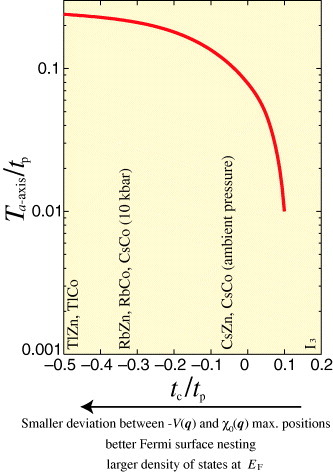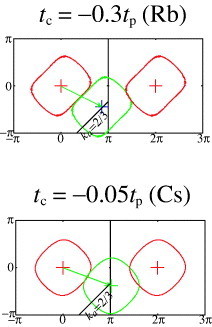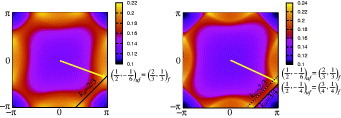Figures & data
Figure 1 Mori's phase diagram for θ-(BEDT-TTF)2X. Reproduced with permission from [Citation6]. Copyright 2006 by the Physical Society of Japan.
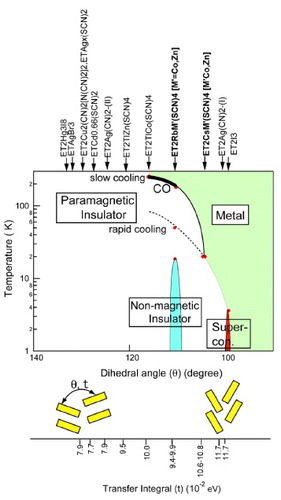
Figure 2 Lattice structure of the cation layer of θ-(BEDT-TTF)2X. tp and tc are the nearest neighbor hopping integrals. (tp, tc)=(106, -5), (137, -49), and (99, -33) [meV] for CsCo, CsCo under pressure (10 kbar), and RbCo salts, respectively, according to the extended Hückel estimation [Citation10]. Vp and Vc are the nearest-neighbor interactions, while Va, Vq, and V2c are the next-nearest-neighbor interactions. The a–c unit cell is the usual unit cell, while we can use the x–y unit cell to unfold the Brillouin zone.
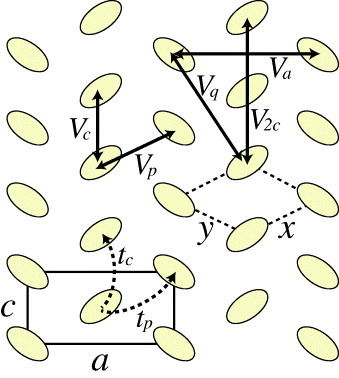
Figure 3 Horizontal stripe, vertical stripe, diagonal stripe, and c-axis threefold charge correlations. The green (or dark) molecules are the charge-rich ones.

Figure 4 a-axis threefold (3×3 and 3×4) charge correlations. The dark molecules are the charge-rich ones.

Figure 5 Upper panel: x-ray scattering intensity scanned along a diffuse sheet, expressed in units of the reciprocal lattice primitive vectors as with - 0.09ξ0.48, where the horizontal axis in the figure is h=-3+2ξ. q1 is the wave vector corresponding to the a-axis threefold (3×3) correlation, while q2 corresponds to the horizontal stripe correlation. Reproduced with permission from [Citation10]. Copyright 1999 by the Physical Society of Japan. Lower panel: line (the arrow) along which the x-ray scan is taken (i.e. the diffuse sheet) shown in the Brillouin zone adopted in theoretical studies (see figure ).
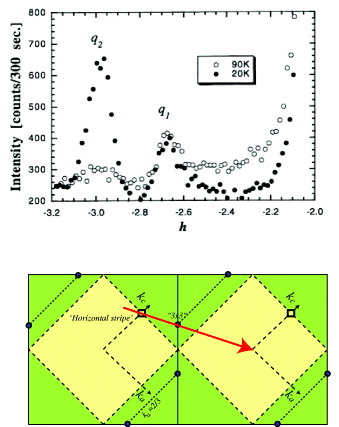
Figure 6 Effective lattice structure using the x–y unit cell. We specify the hoppings and the interactions by c, p, a, q, and 2c, which specify the positions relative to the center (red) site.
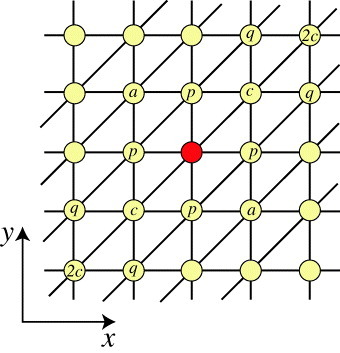
Figure 7 Upper panel: relation between the folded and unfolded Brillouin zone. Modulation wave vectors corresponding to various correlations are shown. The wave vectors are presented in units of the reciprocal lattice primitive vectors. The red line shows the Fermi surface for tc=-0.3. Lower panel: Brillouin zone in the upper panel squeezed in the kx=- ky direction, and then placed repeatedly. The dashed lines represent the diffuse sheets observed at room temperature and below.
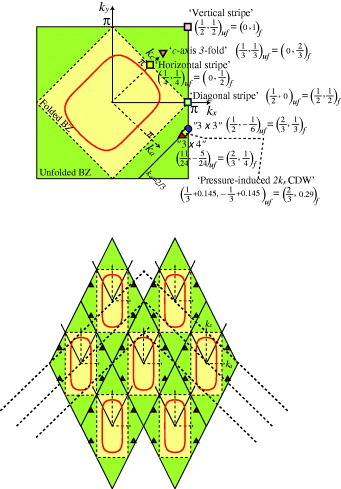
Figure 8 θd lattice. The hopping integrals are c1=1.5, c2=5.2, p1=16.9, p2=-6.5, p3=2.2, and p4=-12.3 in units of 10-2 eV [Citation11]. The green molecules are the charge rich ones in the horizontal stripe state.
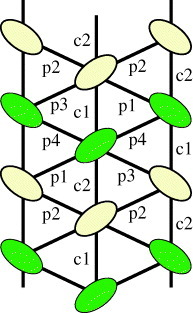
Figure 9 Ground-state phase diagram obtained by (a) variational Monte Carlo and (b) density matrix renormalization group for tc=0, U=10, and Va=Vq=V2c=0. In (b), the diameter of the circles is proportional to the hole density at the hole-rich sites. (a) Reproduced with permission from [Citation28]. Copyright 2006 by the Physical Society of Japan. (b) Reproduced with permission from [Citation29]. Copyright 2008 by the American Physical Society.

Figure 10 Contour plots of the RPA result of the charge susceptibility χc, the bare susceptibility χ0, and the Fourier transform of the off-site interactions - V(q). tc=- 0.3, U=3, Vp=1.3, Vc=1.5, Va=Vq=V2c=0, and T=0.05. The solid (dashed) arrow in χc(q) indicates the dominant (subdominant) peak at wave vectors close to (1/3, 1/3)uf ((1/2, 0)uf). The solid arrow in -V(q) is the wave vector (1/3, 1/3)uf [Citation30].
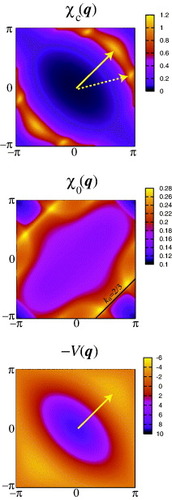
Figure 11 Contour plots of the RPA result for the charge susceptibility χc, the bare susceptibility χ0, and the Fourier transform of the off-site interactions - V(q). tc=- 0.3, U=4, Vp=1.8, Vc=2.0, Va=0.4, Vq=0.7, V2c=1.1, and T=0.25. The arrow in χ0(q) indicates the peak position, i.e. the nesting vector of the Fermi surface. The arrows in -V(q) indicate the area at which -V(q) is broadly maximized [Citation30].
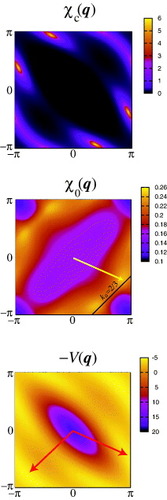
Figure 12 Plots similar to figure except that tc=-0.05 and T=0.15 [Citation31].
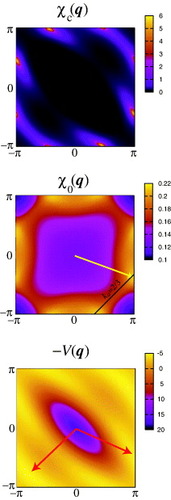
Figure 14 Ta-axis plotted as a function of tc for U=4, Vp=1.8, Vc=2.0, Va=0.4, Vq=0.7, and V2c=1.1 [Citation30]. tp≃0.1 eV∼1000 K is taken as the unit of temperature. The values of tc/tp for X=MM′(SCN)4 are taken from table II in [Citation10]. For X=I3, the value of tp is taken from [Citation5], while that of tc is from ref. [Citation38].
